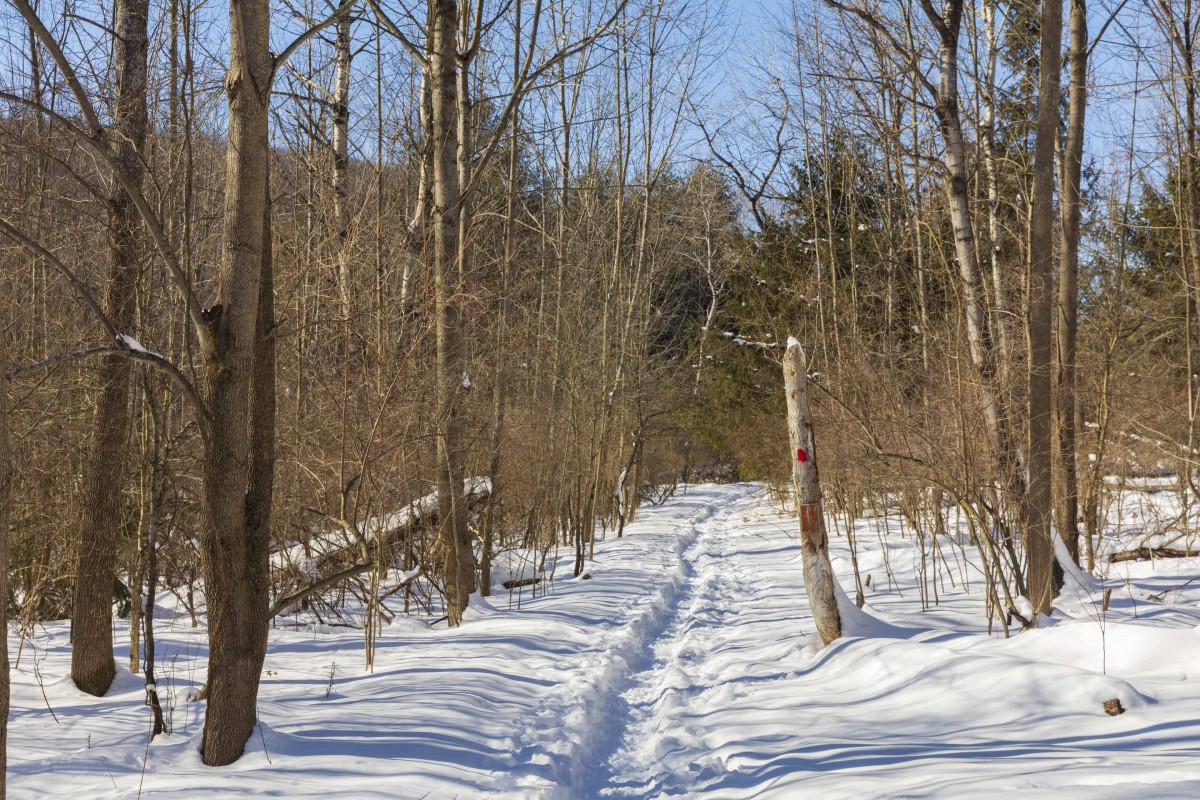In the woods: Research shapes Brendan Enochs’ Binghamton experience

Far below the grand sweep of tree branches, unseen communities support the forest above. Legions of small organisms break down the fallen leaves, putting their nutrients back into circulation.
What happens to those soil communities when a leafy invader enters the picture? That’s what Brendan Enochs ’21 and a team of researchers led by environmental studies instructor George Meindl are working to discover.
The team is looking at the impact of five common invasive species — autumn olive, multiflora rose, Japanese knotweed, Japanese honeysuckle and Japanese stiltgrass — on the soil in Binghamton University’s Nature Preserve. While the preserve’s steward, Dylan Horvath, works to manage their impact there, invasive species are a major issue in the United States, with billions spent on their management each year, said Enochs, a dual major in environmental science and biological sciences.
Soil and the organisms that live within it are far from passive; they play an important role in carbon storage, nutrient cycling and sustaining biodiversity — critical for any ecosystem. Significant negative effects on these processes would mean that these invasive species should be removed for the ecosystem’s health.
To gauge these effects, the researchers collected fallen leaves from five native and five invasive plants. Put into mesh bags, the leaves were left to decay over the winter at different locations within the Nature Preserve.
This spring, the student-researchers will collect the leaf-litter bags during three different time periods, bringing them back to the lab for further study. They will compare the different soil communities that used the leaf litter, as well as the length of time it takes native and invasive species take to decompose on the forest floor. With the aid of Meindl’s graduate student Courtney Fitzgerald, they will also conduct a chemical analysis of the leaves.
“Altogether, this will allow us to build a better understanding of how invasive species may be impacting soil biological communities and hopefully relate it to soil biochemical processes,” Enochs explained.
Undergraduate research
Like any organism, a good researcher needs the right ecosystem to thrive. Enochs, a New York City native who first became interested in biology as a child, found that environment at Binghamton.
His dual majors have given him the opportunity to explore fascinating ecological questions and topics, guided by dedicated mentors who have helped him develop as a researcher and a writer.
In his sophomore year, he participated in the ecological genetics stream of the Summer Research Immersion, taught by former Research Assistant Professor Lua Lopez, now at California State University at San Bernardino.
In one of his biology courses, he examined the impact of an excessive deer population on soil microbial communities; he’s still working on this project, in hopes of submitting an article with his peers to a research publication under the guidance of lecturer Miranda Kearney. In a plant ecology course under Meindl, he explored the use of two aquatic species in helping remove copper pollution from the environment.
In the fall of 2020, he designed his own research project that examined the role of microclimatic variation in the Eastern red-backed salamander’s two color variants, which co-exist with each other in the wild.
“Not only is Brendan a skilled scientist, but he is passionate about the natural world. His research project will provide extremely valuable information toward the preservation of forest ecosystems,” Meindl said.
Enochs enjoys the challenges of tackling unanswered questions and unexplored topics.
“There are always new questions that can be asked and more that spring up as you explore deeper into your initial inquiries. I also really enjoy working with different organisms and learning a lot as I go!” he said.
Research also teaches you to be flexible and willing to adopt new approaches on short notice. In 2020, for example, the restrictions from the coronavirus pandemic interfered with plans to examine the effects of light pollution on the hatching time of new frog species, forcing his team to take the project in a new direction, he said.
Outside of the lab, Enochs is the secretary for the Intellectual Decisions on Environmental Awareness Solutions (IDEAS), a student club that raises awareness of environmental issues. The group organizes a compost program for students both on and off campus, conducts fundraisers and more. Last semester, they donated to the International Union for Conservation of Nature (IUCN) Amphibian Specialist Group, which does crucial conservation work globally to help safeguard at-risk amphibian populations.
He also works for the Undergraduate Research Center to help promote the research opportunities available to all students. Many of his peers don’t realize the amount of resources available, he said.
After graduation, he plans to pursue graduate school and ultimately a research career in ecology and conservation biology. His ultimate dream: work toward the conservation of New York state’s species of concern, preserving them for future generations.
“Binghamton University is a top-ranked research institution that provides undergraduate students like myself with opportunities to conduct research while pursuing their degrees,” Enochs said. “It allows students like myself to gain really crucial experience needed to build skills needed to pursue research at higher levels.”
